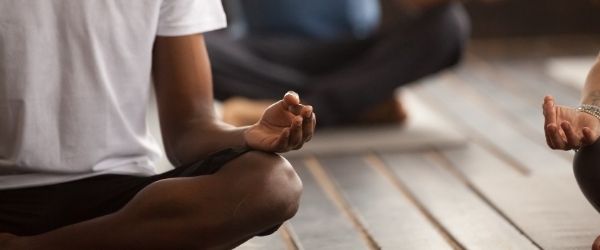Our societal and personal narratives on our aging are at odds. Are we bored or content, selfish or stewards, irrelevant or essential? The societal message is that midlife represents the start of a death march full of disease, decrepitude, and desolation. But, as these graphs show, the reality is a different story (except in Russia, […]
Continue readingMeditation: Silence the mind, feel the soul

Writing about meditation is similar to describing the taste of a tangerine. You can embellish a word description and make references, but nothing comes close to experiencing it for yourself. It is something simple, stop thinking; However, it is an ambitious goal for many, that we have tireless ideas and thoughts that feed each other, in the environment, in the abundance of information, and often in pending activities and concerns.
According to Wikipedia, “meditation is a practice in which the individual trains the mind or induces a mode of consciousness to achieve some specific benefit such as mentally recognizing content without feeling identified with that content, or as an end itself. ”* Although it is not a simple concept, the heart of the issue is not to identify with the content of what we think, to be able to observe and handle the ideas we have, and at some point to allow ourselves internal silence.
There are many benefits and ways to practice it. Numerous studies prove that it helps maintain mental health, mitigate stress, improve attention and concentration skills, tolerate pain, empathize with others, and promote positive thinking. * For example, a study of about 100 cancer patients made by Psychosomatic Medicine found that practicing meditation for about an hour and a half a week reduced symptoms of stress and depression in patients and helped strengthen their immune system. *

In this article, we want to propose some ideas to start or enrich your meditation practice.
- Have a guide, especially when starting. Listen to guided meditations; there are options from renowned authors such as Deepak Chopra and Oprah Winfrey online, teachers from the East who are advertised on the Internet, or others who teach remote classes and/or probably close to where you live. There are also options for tapping meditations on the Internet like Nick Otter or other authors; classes of moving meditation practices such as Chikung, Taichi, and yoga.
- If you have someone who wants to meditate with you, make a plan together to connect or join the practice.
- Put on comfortable clothes and have a blanket handy because it can lower the temperature, or if you go for a walk, a sweatshirt, depending on the weather.
- Find a nice and quiet place. That it has a comfortable temperature, ventilation and if possible, a pleasant or neutral smell. If you want to encourage the habit of meditation at home, you can designate a space, arrange it with flowers or whatever you feel comfortable with.
Some authors propose sitting correctly * (straight back, in a chair with your feet down or in the classic cross-legged position, using a cushion so that the spine is straight and the rest of the body relaxed and attentive). However, some schools invite you to practice meditation while walking, feeling and releasing the tension in your body, taking deep breaths, and observing your thoughts. * - Pay attention to the breath, begin to feel the air that enters and leaves your body, feel each part of your body, and observe the thoughts that arise, more connected with feeling than with thinking.
- If thoughts arise, observe them, and do not build on them, lean on breathing and feeling to let them go by like galloping horses, without getting on the horse.
- During meditation, do not judge the thoughts or how you are doing it; just observe them and develop the ability to disidentify from them.
- Make meditation a habit; it can be short but constant, you can progressively increase time, lean on Habits.ai




















